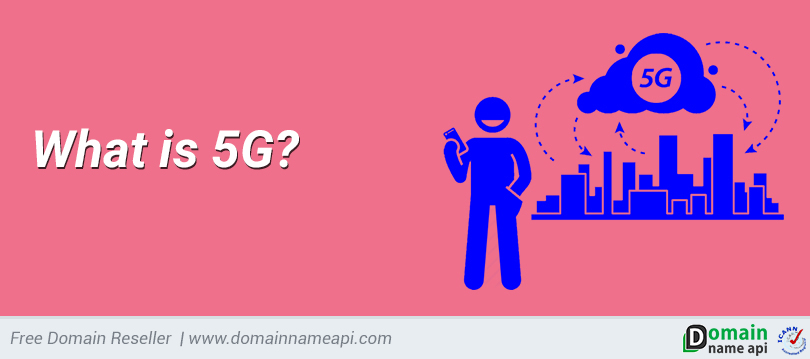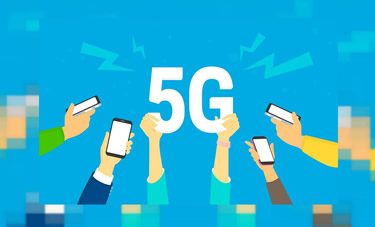
What is 5G?
5G is the next generation mobile broadband that will replace, or at least increase, your 4G LTE connectivity. You will see exponentially faster download and upload speeds with 5G. The latency or the time it takes for devices to communicate with wireless networks will also be significantly reduced.
How Does 5G Work?

Now that we know what 5G is, it's a good idea to understand how it works as it's different from traditional 4G LTE. First, let's talk about the spectrum.
Unlike LTE, 5G operates in three different spectrum bands. While this may not seem important, it will have a dramatic effect on your daily use.
Low band spectrum can also be defined as sub 1GHz spectrum. It is the primary band for LTE used by carriers in the USA, and its bandwidth is almost exhausted. While the low band spectrum offers great coverage and wall penetration, there is one major drawback: The highest data rates will be around 100 Mbps.
T-Mobile is the key player when it comes to low band spectrum. The carrier received a massive amount of 600 MHz of spectrum at a Federal Communications Commission (FCC) auction in 2017 and is using it to quickly build its nationwide 5G network.
The midband spectrum provides higher speed and lower latency than the low band. However, it fails to penetrate buildings as effectively as low-band spectrum. Expect top speeds of up to 1 GB / s in the midband spectrum.
Sprint has most of the midband spectrum not used in the US. The carrier uses Massive MIMO to improve midband penetration and coverage. Massive MIMO groups multiple antennas into a single box and a single cell tower to create multiple simultaneous beams to different users. Sprint will also use Beamforming to support mid-band 5G service. This sends a single focused signal to each user in the cell, and systems using it to monitor each user to make sure they have a consistent signal.
High band spectrum is what provides the highest performance for 5G, but has major weaknesses. It is often referred to as mmWave. Its high band spectrum can offer top speeds of up to 10 Gbps and has extremely low latency. The main disadvantage of high band is that it has low coverage and poor building penetration. This means you will need a ton of cells to create an effective high band network.
AT&T, T-Mobile and Verizon are launching high band spectrum. 5G coverage for carriers will support LTE when attempting to build nationwide networks. The high band spectrum will withstand many small cells as it sacrifices penetration and coverage for high speed. These are low power base stations that cover small geographic areas and can be combined with beamforming to improve coverage.
The International Telecommunication Union (ITU) is a special agency in the United Nations that develops technical standards for communication technologies and sets the rules for the use of radio spectrum and telecommunications operability. In 2012, ITU created a program called "IMT for 2020 and beyond" (IMT-2020) to research and determine the minimum requirements for 5G. After years of work, the agency created a draft report with a minimum of 13 requirements for 5G in 2017.
After the ITU determined the minimum requirements for 5G, the 3rd Generation Partnership Project (3GPP), a collaboration of telecommunications standards organizations, began work on creating standards for 5G. In December 2017, 3GPP completed its non-independent (NSA) specifications and followed its standalone specification (SA) in June 2018.
Both NSA and SA standards share the same specifications, but SA will use a next-generation core network while the NSA uses existing LTE networks for deployment. Operators are starting with the NSA specification, which means you'll be back to 4G LTE in a non-5G environment.
The standards set by 3GPP closely correspond with IMT-2020 performance targets and are somewhat complex, but are outlined here:
Highest data rate: 5G will offer significantly higher data rates. The highest data rates can reach 20Gbps downlink and 10Gbps uplink per mobile base station. Remember, this isn't the speed you'll experience with 5G (unless you have a dedicated connection) - it's the speed shared by all users in the cell.
- Real World Speeds: While the top data rates for 5G look pretty impressive, the actual speeds will not be the same. The specification requires user download speeds of 100Mbps and upload speeds of 50Mbps.
- Latency: The latency required for data to travel from one point to another should ideally be 4 milliseconds, and 1 millisecond for use cases that require the highest speed. For example, consider remote surgery.
- Efficiency: Radio interfaces must be energy efficient when in use and switch to low energy mode when not in use. Ideally, a radio should be able to enter a low-energy state within 10 milliseconds when no longer in use.
- Spectral efficiency: Spectral efficiency is the optimized use of spectrum or bandwidth so that the maximum amount of data can be transmitted with the least transmission error. 5G should have a slightly improved spectral efficiency compared to LTE in 30 bit / Hz downlink and 15 bit / Hz uplink.
- Mobility: With 5G, base stations must support movement from 0 to 310 miles / hour. This means that the base station must operate in a variety of antenna movements, even in a high-speed train. While easily done in LTE networks, such mobility can be difficult in new millimeter wave networks.
- Connection Density: 5G should be able to support much more connected devices than LTE. The standard states that 5G must be able to support 1 million connected devices per square kilometer. This is a huge number taking into account the large number of devices that will power the Internet of Things (IoT).
What Can 5G Do?
The transition to 5G will undoubtedly change the way we interact with technology on a daily basis, but if we want to continue using mobile broadband, this is an absolute must.
Carriers are running out of LTE capacity in many major metropolitan areas. In some cities, users are already experiencing slowdowns during peak hours of the day. 5G adds a large amount of spectrum to unused bands for commercial broadband traffic.
- Autonomous Vehicles
Expect autonomous vehicles to increase at the same rate as 5G in the US. In the future, your vehicle will communicate with other vehicles on the road, provide information to other cars about road conditions, and provide performance information to drivers and car manufacturers. If a car brakes quickly from the front, yours can find out right away and prevent a collision by braking in advance. This type of vehicle-to-vehicle communication can ultimately save thousands of lives.
- Public Safety and Infrastructure
5G will enable cities and other municipalities to work more efficiently. Utilities will be able to easily track usage remotely, inform public works departments when sensors turn off sewage water or street lights, and municipalities will be able to install surveillance cameras quickly and cheaply.
Remote Device Control
Remote control of heavy machinery will be a reality, as 5G has extremely low latency. While the primary goal is to reduce risk in hazardous environments, it will also allow technicians with expert skills to control machines from anywhere in the world.
- Health care
5G's ultra-reliable low-latency communications (URLLC) component can fundamentally change healthcare. A new world of possibilities opens up as URLLC reduces 5G latency even more than you would see with advanced mobile broadband. Expect to see advances in telemedicine, remote recovery and physical therapy through AR, precision surgery, and even remote surgery in the coming years.

